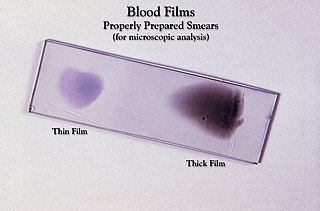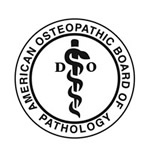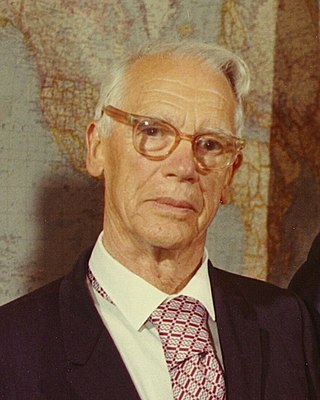Related Research Articles

Pathology is the study of the causes and effects of disease or injury. The word pathology also refers to the study of disease in general, incorporating a wide range of biology research fields and medical practices. However, when used in the context of modern medical treatment, the term is often used in a narrower fashion to refer to processes and tests that fall within the contemporary medical field of "general pathology", an area which includes a number of distinct but inter-related medical specialties that diagnose disease, mostly through analysis of tissue and human cell samples. Idiomatically, "a pathology" may also refer to the predicted or actual progression of particular diseases, and the affix pathy is sometimes used to indicate a state of disease in cases of both physical ailment and psychological conditions. A physician practicing pathology is called a pathologist.

Anatomical pathology (Commonwealth) or Anatomic pathology (U.S.) is a medical specialty that is concerned with the diagnosis of disease based on the macroscopic, microscopic, biochemical, immunologic and molecular examination of organs and tissues. Over the last century, surgical pathology has evolved tremendously: from historical examination of whole bodies (autopsy) to a more modernized practice, centered on the diagnosis and prognosis of cancer to guide treatment decision-making in oncology. Its modern founder was the Italian scientist Giovan Battista Morgagni from Forlì.

Forensic pathology is pathology that focuses on determining the cause of death by examining a corpse. A post mortem examination is performed by a medical examiner or forensic pathologist, usually during the investigation of criminal law cases and civil law cases in some jurisdictions. Coroners and medical examiners are also frequently asked to confirm the identity of remains.
Frederick Thomas Zugibe was the chief medical examiner of Rockland County, New York from 1969 to 2002. Zugibe was known for his research and books on forensic medicine as well as his crucifixion and Shroud of Turin studies.

The medical examiner is an appointed official in some American jurisdictions who is trained in pathology that investigates deaths that occur under unusual or suspicious circumstances, to perform post-mortem examinations, and in some jurisdictions to initiate inquests.

Neuropathology is the study of disease of nervous system tissue, usually in the form of either small surgical biopsies or whole-body autopsies. Neuropathologists usually work in a department of anatomic pathology, but work closely with the clinical disciplines of neurology, and neurosurgery, which often depend on neuropathology for a diagnosis. Neuropathology also relates to forensic pathology because brain disease or brain injury can be related to cause of death. Neuropathology should not be confused with neuropathy, which refers to disorders of the nerves themselves rather than the tissues. In neuropathology, the branches of the specializations of nervous system as well as the tissues come together into one field of study.

Clinical pathology is a medical specialty that is concerned with the diagnosis of disease based on the laboratory analysis of bodily fluids, such as blood, urine, and tissue homogenates or extracts using the tools of chemistry, microbiology, hematology, molecular pathology, and Immunohaematology. This specialty requires a medical residency.
Postmortem is a crime fiction novel by author Patricia Cornwell and is her debut novel. The first book of the Dr. Kay Scarpetta series, it received the 1991 Edgar Award for Best First Novel.
Jan Carla Garavaglia, sometimes known as "Dr. G", served as the chief medical examiner for Orange and Osceola counties in Orlando, Florida, from 2004 until her retirement in May 2015. She starred in the series Dr. G: Medical Examiner on the Discovery Health channel which aired in July 2004 until 2012. Repeats of the show are aired on the Discovery Life channel and Justice Network. Garavaglia has appeared on The Oprah Winfrey Show, Larry King Live, The Rachael Ray Show, The Doctors and The Dr. Oz Show. She was on Head rush with Kari Byron

Ruth Lillian Kirschstein was an American pathologist and science administrator at the National Institutes of Health (NIH). Kirschstein served as director of the National Institute of General Medical Sciences, deputy director of NIH in the 1990s, and acting director of the NIH in 1993 and 2000-2002.
Vincent Joseph Martin Di Maio was an American pathologist and an expert on the subject of gunshot wounds. Born in Brooklyn, New York, he was a board-certified anatomic, clinical and forensic pathologist, and a private forensic pathology consultant.

Edith E. Sproul, M.D. was an American pathologist whose work with Georgios Papanikolaou of the Cornell University Medical School in New York led to the development of the pap smear. Sproul described the relationship between thrombophlebitis and pancreatic cancer and characteristics of early prostatic cancer.

The American Osteopathic Board of Pathology (AOBPa) is an organization that provides board certification to qualified Doctors of Osteopathic Medicine (D.O.) who specialize in the diagnosis and characterization of disease in patients following thorough examination of biopsies and/or bodily fluids (pathologists).

Shields Warren was an American pathologist. He was among the first to study the pathology of radioactive fallout. Warren influenced and mentored Eleanor Josephine Macdonald, epidemiologist and cancer researcher.
John Obafunwa is a Nigerian medical expert, pathologist, lawyer, author and former Vice-Chancellor of Lagos State University.
Judy Melinek is an American forensic pathologist and writer. She is a contract pathologist at the Alameda County Sheriff Coroner's Office and Chief Executive Officer of PathologyExpert Inc.
Michael D. Hunter is an American forensic pathologist is best known for his appearances in the television show Autopsy: The Last Hours of....
Valerie A. Fitzhugh is an American pathologist and Associate Professor of Pathology, Immunology, and Laboratory Medicine at Rutgers New Jersey Medical School as well as an Associate Professor of Pathology and Laboratory Medicine at Rutgers Robert Wood Johnson Medical School. She is the Chair of the Department of Pathology, Immunology, and Laboratory Medicine at Rutgers and the Chair at Rutgers Robert Wood Johnson Medical School as well. Fitzhugh specializes in bone and soft tissue pathology and cytopathology and has made the Pathology Power List by The Pathologist Magazine in 2016, 2018, and 2019. She is involved in educating pathology residents and she actively uses social media as a platform for education and for improving diversity in pathology and she also studies how effective social media is at enhancing accurate communication of science and medicine.
Lynn From was a Canadian physician who specialized in dermatology and skin pathology. From was the pathologist-in-chief at Toronto's Women's College Hospital from 1981 to 1992 and the head of dermatology from 1993 to 2000.
Emily Ellen Volk is an American pathologist and hospital administrator who has served as the chief medical officer at Baptist Health in South Indiana since 2021. She is the 37th president of the College of American Pathologists.
References
- ↑ Vargas, Theresa (December 31, 2007). "Witness to the Mysteries of Death and the Gift of Life". Washington Post. Retrieved August 6, 2017.
- 1 2 3 Gelineau, Kristen (December 31, 2007). "Famed medical examiner retires". USA Today. Retrieved August 6, 2017.
- ↑ Fierro, Marcella Farinelli (June 22, 2010). "Interview Dr. Marcella Fierro". Frontline (Interview). PBS.
- ↑ Peradotto, Nicole. "Alumni Profile: Marcella Fierro". University at Buffalo. Retrieved August 6, 2017.